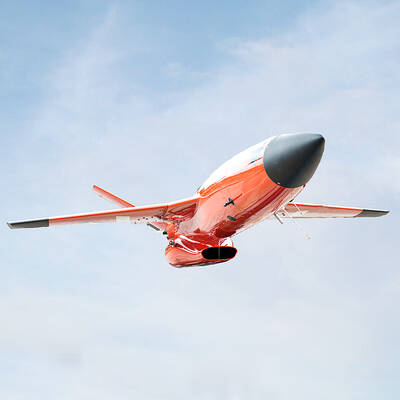While Japan's economic woes have knocked the beans out of other commodities, demand for coffee has gone from good to better and looks set to hit a record high this year, a Japanese coffee roasters' association said.
Japan, the world's third-biggest coffee importer after the US and Germany, purchased 235,835 tonnes of green coffee in the first seven months of this year, up 2.6 percent year-on-year, according to Finance Ministry statistics.
Japan's roasted coffee imports soared 60.2 percent to 2,096 tonnes in the same period.
"We expect Japanese coffee demand to mark a record high this year. Consumption was not affected by the economic slump," Masao Yamashita, executive director of the All Japan Coffee Association, said in a recent interview.
Yamashita attributed the surge in roasted coffee imports to the success of US-style specialty coffee shop chains such as Starbucks Corp and Tully's Coffee Corp. Lacking roasting plants in Japan, they import their beans from their US facilities.
The increase in green coffee imports -- used by domestic roasters to produce instant coffee, regular coffee and canned coffee drinks -- was thanks to the growth of home-use coffee, Yamashita said.
Coffee demand in Japan rose 5.5 percent year-on-year to a record 416,090 tonnes on a green-coffee basis last year.
Yamashita said per-capita consumption of coffee reached 3.17 kg a year last year, surpassing the 2.42kg consumed in Britain -- another country where people are traditionally tea-drinkers.
Japan's per-capita coffee consumption could match the 4.07kg a year savored by Americans and the 5.24kg drunk by continental Europeans, he said.
But growth will depend on roasters' ability to come up with new products to meet consumers' changing needs, he said.
Yamashita cited the success of disposable drip-filters -- small paper filters packed with coffee that allow people to make a single cup of freshly brewed coffee quickly and easily.
Better processing techniques have also raised the standard of instant coffee, helping consumption, he said. Instant coffee accounts for about 44 percent of overall Japanese consumption, while regular coffee makes up some 34 percent. Liquid coffee in cans or bottles accounts for the rest.
The lickety-split expansion of espresso coffee shop chains Starbucks and Tully's has been the hottest topic in Japan's coffee market in recent years, but their growth was achieved at the expense of traditional, individually owned coffee shops, Yamashita said.
Starbucks and Tully's Coffee Japan Co Ltd are now nipping at the heels of Doutor Coffee Co Ltd, Japan's largest coffee shop chain with 1,070 outlets.
"The number of traditional coffee shops has declined as they lose out to the self-service coffee shop chains," Yamashita said. "The growth of Doutor and Starbucks does not necessarily offset the decrease of traditional stores."
The number of Japan's coffee shops peaked in 1980 at 154,630. It has declined steadily since then and now stands at about 90,000.

CROSS-STRAIT COLLABORATION: The new KMT chairwoman expressed interest in meeting the Chinese president from the start, but she’ll have to pay to get in Beijing allegedly agreed to let Chinese Nationalist Party (KMT) Chairwoman Cheng Li-wun (鄭麗文) meet with Chinese President Xi Jinping (習近平) around the Lunar New Year holiday next year on three conditions, including that the KMT block Taiwan’s arms purchases, a source said yesterday. Cheng has expressed interest in meeting Xi since she won the KMT’s chairmanship election in October. A source, speaking on condition of anonymity, said a consensus on a meeting was allegedly reached after two KMT vice chairmen visited China’s Taiwan Affairs Office Director Song Tao (宋濤) in China last month. Beijing allegedly gave the KMT three conditions it had to

STAYING ALERT: China this week deployed its largest maritime show of force to date in the region, prompting concern in Taipei and Tokyo, which Beijing has brushed off Deterring conflict over Taiwan is a priority, the White House said in its National Security Strategy published yesterday, which also called on Japan and South Korea to increase their defense spending to help protect the first island chain. Taiwan is strategically positioned between Northeast and Southeast Asia, and provides direct access to the second island chain, with one-third of global shipping passing through the South China Sea, the report said. Given the implications for the US economy, along with Taiwan’s dominance in semiconductors, “deterring a conflict over Taiwan, ideally by preserving military overmatch, is a priority,” it said. However, the strategy also reiterated

‘BALANCE OF POWER’: Hegseth said that the US did not want to ‘strangle’ China, but to ensure that none of Washington’s allies would be vulnerable to military aggression Washington has no intention of changing the “status quo” in the Taiwan Strait, US Secretary of Defense Pete Hegseth said on Saturday, adding that one of the US military’s main priorities is to deter China “through strength, not through confrontation.” Speaking at the annual Reagan National Defense Forum in Simi Valley, California, Hegseth outlined the US Department of Defense’s priorities under US President Donald Trump. “First, defending the US homeland and our hemisphere. Second, deterring China through strength, not confrontation. Third, increased burden sharing for us, allies and partners. And fourth, supercharging the US defense industrial base,” he said. US-China relations under

The Chien Feng IV (勁蜂, Mighty Hornet) loitering munition is on track to enter flight tests next month in connection with potential adoption by Taiwanese and US armed forces, a government source said yesterday. The kamikaze drone, which boasts a range of 1,000km, debuted at the Taipei Aerospace and Defense Technology Exhibition in September, the official said on condition of anonymity. The Chungshan Institute of Science and Technology and US-based Kratos Defense jointly developed the platform by leveraging the engine and airframe of the latter’s MQM-178 Firejet target drone, they said. The uncrewed aerial vehicle is designed to utilize an artificial intelligence computer